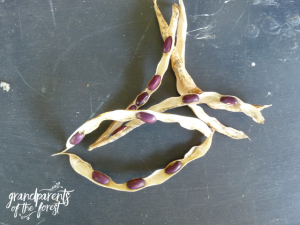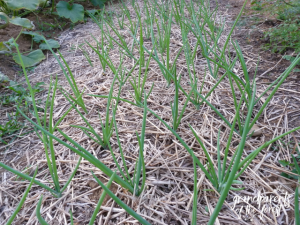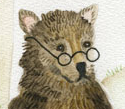The Growing Season Ends
Contributed by Harry
Hopefully, you have had a successful garden this year and, literally, enjoyed the fruits of your labor.
If you have followed our Gardening with Children Guide, you will soon be finishing this year’s activities and harvesting the last veggies and enjoying and cutting the last flowers.
What now?
If your plants have finished producing, it is time to pull them out. “Finished producing” means the plants are dead or dying or all the fruit is harvested and no more flowers are appearing promising more fruit. If they are healthy, you can put them in your compost. If they are infested with pests or disease, it is best to remove them by putting them in a plastic bag, tying it closed and disposing of it. If you don’t pull this year’s dead plants out, they may set and shed seed. This is not a problem, but if you want to ‘rotate your crops’ you may have to deal with ‘weeds’ next year.
I tend to have dill and cilantro all over my garden every year. A random marigold is a whimsical addition (and some marigolds deter nematodes). This may be a blessing, not a problem, but some larger plants, like tomatoes and kale might end up crowding out the things you plant next year if left to their own devices.
 If you intentionally let some of your crops go to seed, like the dill, cilantro, beans, calendula, sunflowers, etc. (see our Facebook posts on the subject), it should be about time to collect those seeds if you have not already. Once the seeds are collected you can pull out the plants and add them to the compost.
If you intentionally let some of your crops go to seed, like the dill, cilantro, beans, calendula, sunflowers, etc. (see our Facebook posts on the subject), it should be about time to collect those seeds if you have not already. Once the seeds are collected you can pull out the plants and add them to the compost.
We assume you have been weeding your garden, whether in the ground or in containers, all through the growing season to cut down on competition from ‘weeds’ for precious nutrients and water. Even though your garden is finishing up, you should pull out and remove all ‘weeds’ that may have escaped notice. If they are flowering or have seeds on them you should not put them in your compost. Compost needs to get pretty hot to kill seeds.
“Nature abhors a vacuum.” That means if some thing is not growing in a space, some other thing will arrive to fill it. So bare soil will invite seeds blown or dropped in to germinate and root.
You can prevent this in a couple of different ways:
If you are growing in containers and they are small enough to easily move, put them some place where they are not exposed to rain and light. Any weed seeds will be less likely to germinate over winter.
If you are growing in the ground you can:
1) Mulch the soil with three or four inches of grass clippings, shredded leaves, wood chips, straw, etc. This will protect the soil from erosion and compaction. It will protect the bacteria, earthworms and other denizens of the soil from the harsh extremes of winter. It will also deny weed seeds light so any seeds that do germinate will die due to lack of light. Those that do make it through the mulch will be easy to remove. And as the mulch decomposes, it will add nutrients to the soil.
2) Grow a ‘cover crop’ like crimson clover, rye grain (not rye grass) or mustard. This will do several things. It will prevent erosion and compaction. It will maintain the soil microbiology through winter. And a legume like crimson clover will add Nitrogen to the soil; rye is “allelopathic” meaning it prevents other plants from growing, so it is a natural weed prevention; mustards kill or suppress diseases and pests. (Many farmers plant all three for maximum over-winter benefit! We used to do that on our farm.) In the spring, you can either cut these to put them in your compost or chop them up (mow them down) and turn them into the soil to break down and add more organic matter to the soil. If you do grow rye as a winter cover and turn it into your soil, wait two weeks before growing. The allelopathy will dissipate by then.
3) If you are in a Hardiness Zone which is not too extreme, you can grow a cold tolerant crop into the winter! If you start your winter crop early enough (now or earlier, depending on the crop and your location), you can be eating kale, carrots, beets, parsley, spinach, collards, lettuce, etc. for quite a while, maybe all the way to spring! In our Zone 7 farm, we fed customers 10 months a year and ate from our fields all year round!
 If you like garlic or onions and have the room, now is the time to plant some so it will be ready next year. The onions in the photo at left are bunching onions. We will pull them through the winter to add to recipes. Notice the straw mulch to keep down weeds.
If you like garlic or onions and have the room, now is the time to plant some so it will be ready next year. The onions in the photo at left are bunching onions. We will pull them through the winter to add to recipes. Notice the straw mulch to keep down weeds.
[If your containers are large or immobile, you can do these things to them also!]
Also, if you grow in the ground, now is a good time to have your soil tested. If needed, agricultural lime applied now will have time to “sweeten” the soil for your next year’s garden. The results of a soil test will tell you how much to use.
So, a little flurry of activity now as autumn advances will help give you a head start on spring – or you can continue enjoying produce for a while yet.
We hope this helps you continue to enjoy your garden and Nature. Remember to explain to your young helpers what and why you are doing. Don’t let good ‘teaching moments’ escape.


